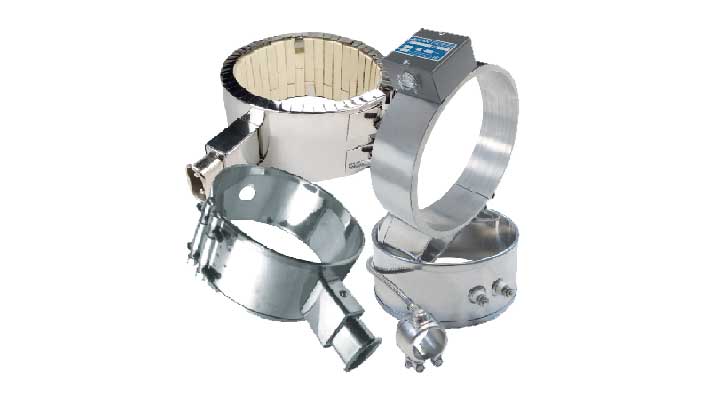
A mica band heater is only as effective as its installation. Even the best-designed heater can underperform if it’s not clamped properly. Clamping pressure plays a critical role in ensuring efficient heat transfer, reducing wear, and preventing costly failures. Understanding how the right pressure affects performance can make all the difference in maximizing the lifespan and efficiency of these essential heating elements.
Prevention of Air Gaps That Cause Uneven Heating and Inconsistent Temperature Control
Proper clamping pressure eliminates air gaps between the mica band heater and the surface it’s heating. These gaps create insulation pockets that prevent heat from transferring efficiently, leading to cold spots and fluctuating temperatures. When air gaps exist, the heater must work harder to compensate for uneven heating, which increases energy consumption and shortens its lifespan.
A tightly secured mica band ensures consistent temperature control across the entire surface. This is especially important in industries requiring precise thermal regulation, such as plastic molding and extrusion. Without uniform contact, certain areas of the barrel or nozzle may overheat while others remain too cool, causing processing issues and material inconsistencies.
Secure Contact with the Barrel That Reduces Wear and Extends Heater Lifespan
A mica band heater must maintain firm contact with the barrel or other heating surfaces to function efficiently. Loose clamping allows the heater to shift slightly during thermal cycling, causing friction and mechanical wear. Over time, these movements degrade the band’s structural integrity, leading to premature failure.
By applying the correct clamping pressure, the heater remains securely in place, reducing strain on the heating elements. This not only extends the lifespan of the mica band but also ensures steady performance throughout its use. A well-secured heater minimizes maintenance needs, lowering downtime and replacement costs in high-production environments.
Proper Torque Application That Prevents Over-Tightening and Premature Heater Failure
While securing the mica band heater is essential, over-tightening can cause just as many issues as a loose fit. Excessive clamping pressure distorts the heater’s structure, damaging the insulation and internal heating elements. This results in uneven performance, higher energy consumption, and a significantly shorter operational life.
Applying the correct torque ensures a secure fit without compromising the heater’s integrity. Manufacturers often provide recommended torque specifications, which should always be followed. Using a torque wrench during installation helps achieve the right balance, keeping the heater firmly in place without unnecessary stress on its components.
Reduction of Thermal Expansion Issues That Can Lead to Loosening Over Time
Mica band heaters operate under extreme temperatures, causing both the heater and the heated surface to expand and contract. Without proper clamping pressure, this thermal expansion can lead to gradual loosening over time. A loose heater becomes inefficient, requiring frequent adjustments or replacements.
Securing the heater with the right amount of pressure allows it to adapt to these expansions without shifting or losing contact. This stability ensures long-term efficiency, preventing heat loss and maintaining consistent temperature distribution. A properly clamped heater performs better, lasts longer, and reduces the need for ongoing maintenance.
Improved Heat Distribution That Ensures Uniform Processing in High-Precision Applications
Even heat distribution is critical in applications that demand precision, such as plastic extrusion and injection molding. If a mica band heater isn’t clamped correctly, certain areas will heat faster than others, leading to processing errors, inconsistent product quality, and material waste.
With proper clamping pressure, heat spreads evenly across the surface, ensuring reliable and repeatable results. Industries that depend on precise temperature control benefit from a well-secured heater that delivers consistent heating performance. Avoiding uneven heat distribution reduces scrap rates, improves efficiency, and enhances the overall production process.
Enhanced Mechanical Stability That Keeps the Heater in Place During Continuous Operation
Mica band heaters often run for extended periods, sometimes in demanding industrial environments. Continuous operation subjects them to vibrations, external forces, and mechanical stress. If a heater isn’t securely clamped, it can shift out of position, reducing efficiency and potentially damaging surrounding components.
Proper clamping pressure keeps the heater stable, ensuring it remains exactly where it needs to be. This mechanical stability is crucial for maintaining optimal performance and preventing unnecessary downtime. A securely fitted mica band heater operates more efficiently and requires fewer adjustments, allowing businesses to maintain smooth and uninterrupted production.